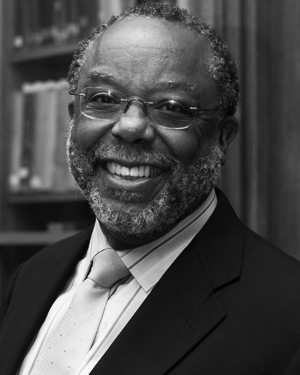Make that change

The Boston Society of Architects/AIA (BSA) is at the forefront of professional advocacy on behalf of design as a fundamental tool for achieving social justice. The BSA, as one of the largest AIA components, with the persistent will to connect emerging professionals to committed mentors, has achieved national leadership in promoting social justice as a means and outcome for successful design practitioners.
Board recruitment
The BSA’s commitment to social justice and diversity within the profession began with focused recruitment of women and under-represented people of color to the board and to committees. Those who are not licensed architects have been regularly recruited and nurtured as long-term contributors to policymaking discussions and positions. Long before research by global management consultants pointed to the enhanced profitability value of including diverse and sometimes contrarian viewpoints to policy discussions, the BSA’s board and staff, particularly with the longtime team leadership of Richard Fitzgerald Hon. BSA and Nancy Jenner Hon. BSA, brought diverse viewpoints from nonarchitects into ongoing policy discussions, and that commitment has been sustained over several decades.
Diversity commitment
Perhaps the best known of the BSA’s commitments to diversity was the publication in 2003 of the book 20 on 20/20 Vision: Perspectives on Diversity and Design, a collection of essays and articles by practitioners and scholars on the experiences of diverse designers and on the value of incorporating varying viewpoints into design processes. This publication was accompanied by the BSA’s successful leadership in advocating for a $200,000 AIA national study and analysis of the status of diversity within the profession. and the development of specific cross-sectoral and longitudinal (schools, licensing, firm practices, and professional associations locally and nationally), recommendations on how to increase diversity. This work inspired the national organization, affiliated design associations, and AIA components to undertake local analyses and training programs to increase diversity.
The BSA has been assiduous in promoting the professional accomplishments of women and people of color by recognizing New England practitioners through fellowships, and the Thomas Jefferson and Whitney Young awards. The organization has also been at the forefront of promoting awareness of universal design and handicapped accessibility through a close working relationship with the Institute for Human Centered Design (formerly Adaptive Environments).
Education and professional development
The Greater Boston area, including Rhode Island, has the highest per capita percentage of design schools in the United States and a community of emerging professionals interested in applying their skills toward serving those in need. The BSA has been the leading proponent of bringing diverse schools and students together to discuss trends in design education, accreditation, and student engagement with social justice and service. No other AIA component has taken the bold step of bringing together sometimes competing educators to discuss their shared concerns and pedagogical interests. The BSA quietly supported the launch of ArchVoices, an online publication of emerging practitioners, which consistently raised issues relevant to younger designers seeking to reshape the profession to be more in line with public service and less fixated on design for its own sake. That organization’s mission morphed into work to implement a “1% Solution,” where 1% of a design firm’s revenues would be allocated toward internally supported public-service activities.
The BSA’s array of professional-development programs begin with local design students and recent graduates. Currently enrolled students have been encouraged to become early participants in BSA policymaking committees, and the Community Design Resource Center of Boston has brought together students from various schools to expose them to experiential community-based learning with local nonprofit service organizations. While the AIA national office encouraged local components to provide free component membership for the first year after graduation, and to support local educational efforts toward licensure, the BSA has been a leader in announcing such benefits at the schools’ graduation ceremonies. Such early engagement underlines the value of professional networking and has enabled participants and the organization itself to build institutional confidence in the services the BSA provides.
Frequent ongoing lectures, conferences, workshops, and other professional-development activities have helped strengthen small- and large-firm management practices, including personnel management, IT development, retirement and management transition planning, comparative client development and marketing practices, business analyses of industry economic trends, collaboration mechanisms, public advocacy, and the application of ethical standards in practice. In some years, practitioner participation at Build Boston was greater than at the AIA annual convention, as the New England regional event provided more directly salient learning and display activities, with less internal political activity, than did the national architects’ conference.

Personally, the BSA enabled me to be a better president of the Boston Architectural College (BAC), as it exposed me to deep practitioner thinking in local design firms. I participated in and learned much from Big Sibs (AIA chapters with over 1,000 members) ) conferences; AIA long-range planning and diversity committees’ participation; presentations at Build Boston, ABX, and national conferences; leadership work with the Association of Collegiate Schools of Architecture, National Architectural Accrediting Board, and NCARB; preparing for the Whitney Young diversity recognition; and numerous other professional-design activities that the BSA encouraged me to participate in. I could not have doubled the BAC’s size and scope of learning activities or increased the school’s ranking and national recognition without the BSA’s encouragement and support. The Boston Society of Architects is an exemplary professional-service organization that has demonstrated that the professions and local communities benefit substantially from educational, professional development, and advocacy efforts on behalf of those who might not ordinarily receive needed design services.
Dr. Ted Landsmark,
director of the Dukakis Center for Urban and Regional Policy at Northeastern University, president emeritus of the Boston Architectural College, past president of the National Architectural Accrediting Board, past president of the Association of Collegiate Schools of Architecture, and a long-term member of the BSA board of directors.

